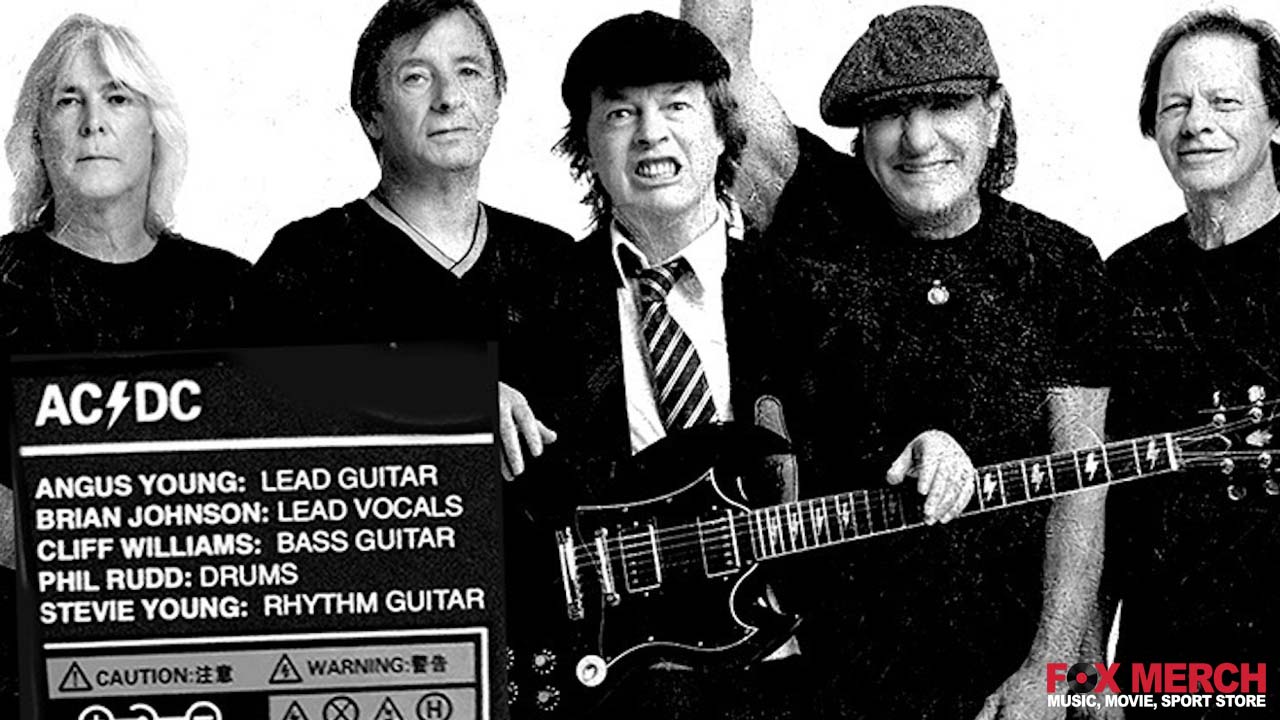The History and Formation of ACDC
AC/DC. The very name conjures images of roaring guitars, pounding drums, and a schoolboy strutting across a stage bathed in red light. This Australian band has delivered high-voltage rock and roll to millions worldwide for nearly five decades. Their music, a potent blend of blues-inspired riffs, driving rhythms, and instantly recognizable vocals, has become synonymous with rebellion, energy, and good times. But AC/DC’s place in music history isn’t just about loud guitars and catchy anthems. They represent a dedication to craft, an unwavering commitment to their sound, and a relentless work ethic that has inspired countless artists and shaped the landscape of rock music.
One must delve into their history to truly appreciate AC/DC’s legacy. Understanding their origins, struggles, and triumphs connects their music more deeply. It reveals the driving forces behind their sound, the influences that shaped their style, and the unwavering dedication that propelled them to legendary status. This journey through AC/DC’s history will illuminate how a band from Sydney, Australia, conquered the world with their electrifying rock and roll brand.

The Early Years
Origins of the Band
The story of AC/DC begins in Sydney, Australia, in 1973. Brothers Malcolm and Angus Young, who recently emigrated from Scotland, shared a burning passion for rock and roll. They envisioned a band delivering raw, powerful music with an electrifying stage presence. With Malcolm on rhythm guitar and Angus, the younger brother, on lead, AC/DC was born.
The Name “AC/DC”
The band’s unique name, “AC/DC,” originated from a label on their sister Margaret’s sewing machine. The initials stood for “alternating current/direct current,” which the brothers felt perfectly captured the energy and intensity of their music. The name also hinted at the electrifying presence of Angus Young, who quickly became known for his dynamic stage performances and signature schoolboy uniform.
Early Logo and Branding Development
AC/DC’s early logo featured a simple, bold typeface with the letters “AC/DC,” often stylized with a lightning bolt replacing the slash. This visual element reinforced the band’s high-voltage image and their connection to raw power. Their branding, from album covers to concert posters, further emphasized this theme with images of electricity, lightning, and explosive energy. This consistent visual language helped establish AC/DC’s identity as a force to be reckoned with in rock music.

Founding Members
AC/DC’s initial lineup comprised personalities and talents, each contributing to the band’s early sound and development. While the Young brothers formed the core, these early members played a crucial role in shaping AC/DC’s formative years.
Malcolm Young
Malcolm Young, the elder of the Young brothers, was the driving force and musical backbone of AC/DC. His powerful rhythm guitar playing laid the band’s signature sound foundation. Malcolm was not just a guitarist but a leader, songwriter, and band’s anchor. His steady presence and musical vision guided AC/DC through their early years and beyond.
Angus Young
Angus Young, the younger brother, quickly became the face of AC/DC. His explosive lead guitar work and electrifying stage presence, complete with his iconic schoolboy uniform, made him a rock and roll legend. Angus’s raw energy and undeniable talent captured audiences’ attention worldwide.
Early Bandmates
- Dave Evans: The original vocalist for AC/DC, Dave Evans, briefly fronted the band in its early days. His style leaned more towards glam rock, which didn’t align with the band’s evolving sound.
- Colin Burgess: The band’s first drummer, Colin Burgess, provided a solid rhythmic foundation during AC/DC’s formative performances.
- Larry Van Kriedt: As the original bassist, Larry Van Kriedt contributed to the band’s early recordings and live shows.

Reasons for Lineup Changes
The early years of AC/DC saw several lineup changes as the band searched for the right combination of musicians to fulfill their vision. These changes were driven by a desire to find members who shared their commitment to hard-driving rock and roll and who could contribute to their evolving sound and stage presence. The departure of Dave Evans, in particular, marked a turning point as the band sought a vocalist who could deliver the raw power and bluesy swagger that would become their trademark.
The Turning Point: Bon Scott Era
Replacing Dave Evans with Bon Scott
In 1974, AC/DC made a crucial decision that would forever alter their trajectory. They replaced their original vocalist, Dave Evans, with Bon Scott. Scott, a seasoned performer with a raspy voice and a rebellious spirit, brought a raw energy and bluesy swagger that perfectly complemented the Young brothers’ driving riffs.
The Chemistry between Scott and the Young Brothers
The arrival of Bon Scott ignited a creative spark within AC/DC. The chemistry between Scott and the Young brothers was undeniable. They shared a love for rock and roll, a rebellious attitude, and a desire to create powerful and entertaining music. Scott’s lyrics, often infused with humor and a working-class sensibility, resonated with audiences, while his stage presence exuded charisma and raw energy.
Developing Their Signature Sound
With Bon Scott at the helm, AC/DC honed their signature sound. They moved away from the glam rock influences of their early days and embraced a more complex, blues-infused rock and roll style. Malcolm Young’s driving rhythm guitar, Angus Young’s blistering leads, and Bon Scott’s distinctive vocals coalesced into a powerful and instantly recognizable sound. This era saw the release of classic albums like High Voltage, T.N.T., Dirty Deeds Done Dirt Cheap, and Let There Be Rock, establishing AC/DC as a major force in the Australian music scene.
Related: Learn how ACDC’s early albums set the stage for their success.
Early Inspirations and Influences
AC/DC’s sound was forged from a variety of influences. The bluesy swagger of Chuck Berry, the raw power of The Rolling Stones, and the hard-driving energy of Led Zeppelin all played a role in shaping their musical identity. They also drew inspiration from Australian rock bands like The Easybeats and Rose Tattoo, adding a unique flavor to their sound. This blend of influences, with their raw talent and dedication, resulted in the iconic AC/DC sound that resonates with fans today.

Breakthrough Moments
First Performances and Local Success
AC/DC’s early days were a whirlwind of live performances in pubs and clubs across Sydney. Their raw energy and Angus Young’s electrifying stage presence quickly earned them a reputation as a must-see live act. Word of mouth spread and AC/DC soon became a popular draw in the local music scene. These early gigs were crucial in honing their skills and developing their stagecraft, laying the foundation for their future success.
Debut Album: High Voltage (1975)
In February 1975, AC/DC released their debut album, High Voltage. Recorded in just ten days, the album captured the raw energy and bluesy rock and roll sound that had become their trademark. Songs like “T.N.T.”, “Little Lover,” and “She’s Got Balls” showcased Bon Scott’s distinctive vocals and the Young brothers’ powerful guitar work. High Voltage was an immediate success in Australia, reaching the top ten on the album charts and establishing AC/DC as a major force in the Australian music scene.
Related: Explore the concerts that introduced ACDC to the world.
Standout Tracks that Laid the Foundation for their International Success
- “T.N.T.”: With its iconic opening riff and Bon Scott’s powerful vocals, this explosive track became an anthem for the band and a staple of their live shows.
- “It’s a Long Way to the Top (If You Wanna Rock ‘n’ Roll)”: This song, featuring bagpipes and a driving rhythm, captured the struggles and triumphs of a rock and roll band on the road.
- “High Voltage”: The title track perfectly encapsulated the band’s electrifying sound and attitude with its infectious energy and catchy chorus.
International Aspirations
With their success in Australia, AC/DC set their sights on international stardom. They recognized the limitations of the Australian market and sought to conquer the world with their unique brand of rock and roll. In 1976, they relocated to the UK, a music industry hub, and embarked on their first international tours. This bold move marked a turning point in their career, opening doors to new audiences and setting the stage for their global domination.

Challenges in the Early Days
Like most bands starting, AC/DC faced their share of obstacles on their road to success. These challenges tested their resolve and forced them to adapt and innovate to achieve their goals.
Lineup Instability
Finding the right combination of musicians proved to be an early hurdle for AC/DC. While the Young brothers formed a solid core, the band experienced frequent lineup changes in their early years, particularly with the bass and drum positions. This instability created challenges in establishing a consistent sound and maintaining momentum. However, each change brought them closer to the lineup that would solidify their success.
Financial and Logistical Hurdles
Funding tours, recording sessions, and equipment was a constant struggle in the early days. AC/DC, like many aspiring bands, had limited resources and faced financial constraints. They relied on their ingenuity and determination to overcome these hurdles, often playing gigs for little or no pay and investing their earnings back into the band.
Criticism of Their Style
AC/DC’s raw, high-energy style was initially not universally embraced. Some critics dismissed their music as simplistic and derivative, failing to recognize the power and originality of their sound. The band faced skepticism and even hostility from some quarters of the music industry. However, AC/DC remained true to their vision, ignoring the naysayers and focusing on connecting with their growing fanbase.
Overcoming these early challenges forged a sense of resilience and determination within AC/DC. Their unwavering commitment to their music, work ethic, and refusal to compromise their vision ultimately paved the way for their breakthrough success.

Conclusion
From their humble beginnings in the pubs of Sydney to their breakthrough moments on the Australian music scene, AC/DC’s journey has been one of dedication, perseverance, and unwavering commitment to their vision. With their passion for raw, influential rock and roll, the Young brothers laid the foundation for a band that would become synonymous with electrifying energy and rebellious spirit.
The arrival of Bon Scott proved to be a pivotal moment, igniting a creative spark that led to the development of their signature sound. Their early albums, fueled by Scott’s distinctive vocals and the Young brothers’ driving guitars, captured audiences’ attention and set the stage for their international aspirations.
Despite challenges like lineup changes, financial hurdles, and style criticism, AC/DC has yet to pursue rock and roll glory. They overcame these obstacles with resilience and determination, forging a bond to propel them to legendary status.
This exploration of AC/DC’s formation and early years provides a glimpse into the foundation for their future success. It reveals the key ingredients that made them unique: Malcolm Young’s powerful rhythm guitar, Angus Young’s electrifying lead guitar and stage presence, and Bon Scott’s raw energy and charisma.
But this is just the beginning of the story. AC/DC’s journey would take them to new heights with iconic albums, legendary tours, and a lasting impact on the music world. Stay tuned for future articles that delve into their rise to global stardom, triumphs and tragedies, and enduring legacy as one of the greatest rock and roll bands ever.
